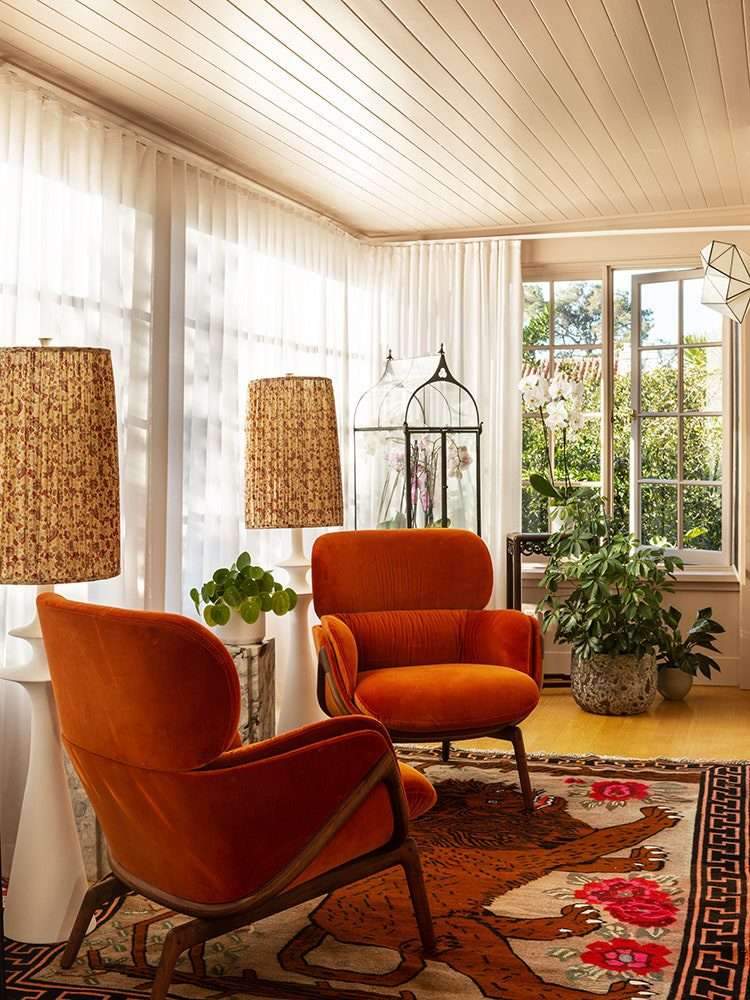14 Interior Design Trends Pros Are Eager to Leave Behind in 2023
Every year, AD PRO checks in with our network to get their predictions on the styles and interior design trends that will resonate in the year ahead. Perhaps even more telling is the reverse: the unflattering or overused design choices that pros would happily bid adieu come the new year. Below, leading creatives candidly weigh in on the interior design trends they hope to leave behind in 2023.
Matchy-matchy design
“In 2023—let’s move past purchasing matching furniture sets because, well, you can tell. While it’s important to coordinate colors and patterns, it is the combination of finishes and textures that truly add style to a home, so don’t be afraid to mix it up. Who knows, you may even enjoy the search for unique pieces!” —Taylor Shanahan, Redmond Aldrich Design
“Grotesque” furniture
“There is something intrinsically alienating about design work with the sole purpose of shock or repulsion. Without humor, nuance, or wit, grotesque design is a wasted opportunity to reach a wide audience in a positive way and a trend I hope we can leave behind in the coming year, because it is an easy shortcut for designers to get attention. I’d like to see more work that adds to the conversation. It can be ‘grotesque,’ but also funny or thought-provoking or layered.” —Jean Lin, Colony
Oversized knits
“Chunky knit blankets are on their way out, and handmade quilts are on their way in. We love a touch of handmade.” —Young Huh, Young Huh Interior Design
Fast furniture
“Let’s say good riddance to fast furniture and invest in signature pieces in 2023! We’ve made such successful strides in moving past fast fashion, so why not apply this same motto to interior design? Unfortunately, overproduced pieces simply look like they are overproduced. And while everyone likes a good deal, it should never be at the cost of quality and style. One trick I recommend is shopping on Etsy for high-quality, handmade furniture or frequenting secondhand and vintage shops for a distinctive piece that also reduces your carbon footprint.” —T.S.
Shiny, sterile environments
“Shiny, new, cold finishes are out. Age, wearability, and anything with a story and a past is in. Patina and age have more depth and meaning than new shiny objects, which means we are drawn to earthier, honed, aged finishes. That’s what’s driving design and everything we source. Instead, try mixing aged metals with organic finishes and layering stained woods—a lot of wood is in.” —Cortney Bishop, Cortney Bishop Design
Regional clichés
“As I look forward to 2023, I’d be thrilled to see fewer recycled ideas in the design world. Barnwood in the mountains or rope furniture and white slipcovers at the beach seem to be a given today. The joy of experiencing something new should be carried into our homes, whether through daring color palettes, or charming and unique hand-crafted materials. Spaces that are inspired and original will never grow old.” —Jessica Jubelirer, Jessica Jubelirer Design
How did 2022’s ready-to-retire designs fare?
Backlit stone finishes, open floor plans, overstuffed seating were among the decorating choices designers were ready to leave behind in 2022. While some lingered into the new year, others updated their statuses to officially dated. Be the judge for yourself with last year’s full list below.
Overstuffed seating
“Let’s say goodbye to 2021 and overly creative upholstered chairs that are overstuffed like a Michelin man—and also sofas with asymmetrical angles that look more like sculpture than a comfortable place to sit. Classic shapes and styles like Jean Michel Frank, George Smith, and Mies van der Rohe remain timeless because they were designed with comfort and proportion in mind rather than what looks intriguing on an Instagram post.” —Michael Cox, Foley & Cox
Pared-down interiors
“I’m tired of seeing pared-down interiors obviously styled by real estate agents and stagers who feel that the only homes that sell are those that are basically empty and devoid of personal effects. Sadly, I think this look trickles down to a lot of editorial and advertising in the design world and DIY’ers who think this is what is on trend. Actually it’s the opposite, and I’m much more keen to see a place that has been lived in and loved that tells a story!” —Frank de Biasi, Frank de Biasi Interiors




